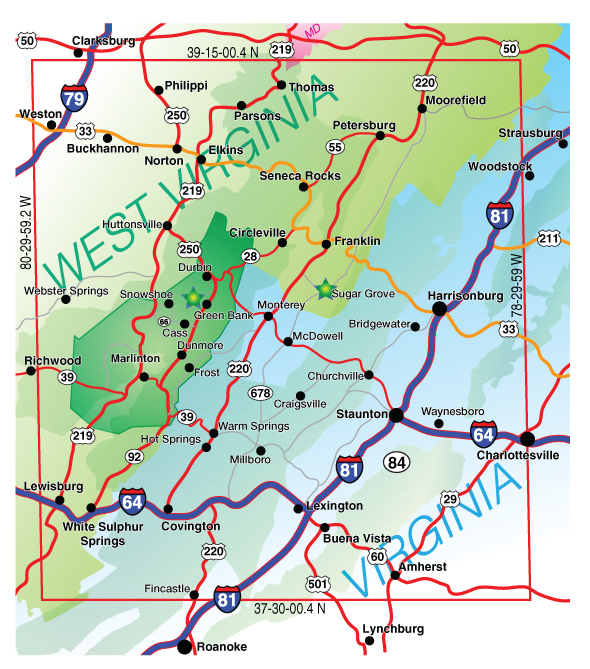
the National Radio Quiet Zone affects major radio transmitters in a portion of Virginia
Source: National Radio Astronomy Observatory, National Radio Quiet Zone
Municipal governments in Virginia include cities, counties, and towns. There are no townships within the state. There are tribal governments for the 11 state-recognized tribes. The Pamunkey and Mattaponi have authority over their state-recognized reservations.
In addition, there are special districts in the state with the power to tax or make decisions that affect public policy:1
Elected officials appoint the people responsible for managing special districts, except local voters elect some membes on boards of soil and water conservation districts. In some counties and cities, voters also elect school board members.
School boards have the authority to spend a substantial portion of a jurisdiction's general fund revenue. In Virginia all school boards depend upon elected city/town councils and county supervisors to appropriate funding for operations and for capital improvements (primarily constructing/rehabilitating school buildings). No school board in Virginia has the authority to impose any taxes, but every school board has administrative and fiscal independence.
The General Assembly created the Norfolk Area Medical Center Authority in 1964 and gave it responsibility to establish a medical school in Hampton Roads. Today it is the only school district government in Virginia.2

the National Radio Quiet Zone affects major radio transmitters in a portion of Virginia
Source: National Radio Astronomy Observatory, National Radio Quiet Zone
One special district in Virginia is the National Radio Quiet Zone. It was created by the Federal Communications Commission (FCC) in 1958 to protect the National Radio Astronomy Observatory (NRAO) in Green Bank, West Virginia from interference from radio transmitters. The world's largest fully-steerable radio telescope measures very faint radio signals arriving from space, and ground-based transmitters would prevent accurate measurements.
Within a nearly rectangular zone covering nearly 13,000 square miles, all permanent, fixed, assigned or licensed radio transmitters must get approval from the National Radio Astronomy Observatory, or get the Federal Communications Commission to resolve conflicts. In Zone 1, the Radio Astronomy Instrument Zone closest to the telescope, all vehicles run on diesel fuel. because gasoline-powered engines using spark plugs generate radio interference. Within 2-10 miles of the observatory, wi-fi routers and microwave ovens create unacceptable signals.
Allegheny Mountain Radio is able to broadcast by using a very low frequency. To provide connections for mobile phones at Snowshoe Mountain Resort, special short-range cell receivers were installed rather than traditional transmitters on towers.
The Virginia border is far enough away from the telescope that only significant radio transmitters, such as TV stations, are affected. Interference can be prevented by using highly directional and low-power antennas.3